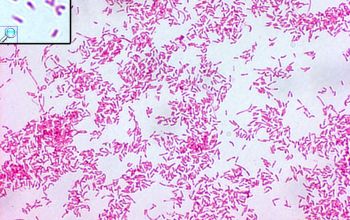Campylobacter ureolyticus
-
General information
C. ureolyticus is phenotypically close to C. gracilis
They are actually microaerophilic rather than obligates anaerobes.
Taxonomy
Family: Bacteroidaceae
Formerly: Bacteroides ureolyticus
Natural habitats
They are part of the flora of the mouth.
Clinical significance
Isolated from patients with infections of the lung, neck, abdomen, oral cavity, urogenital, bone and tissue.
-
Gram stain
Thin Gram negative rods, slightly curved, with rounded ends
0.5 x 1.5-4 µm.
Filaments exceeding 20 µm in length may occur
-
Culture characteristics
-
Obligate anaerobic
BBAØ: the colonies are small, translucent, or transparent, and may produce greening of the agar.
Three colony morphotypes exist:
1) smooth and convex
2) pitting
3) spreading
All three can occur in the same culture, so they may resemble a mixed culture.
BBEØ: no growth
Fluorescentie/Woodslamp
Negative
-
-
Characteristics
-
References
James Versalovic et al.(2011) Manual of Clinical Microbiology 10th Edition
Karen C. Carrol et al (2019) Manual of Clinical Microbiology, 12th Edition






